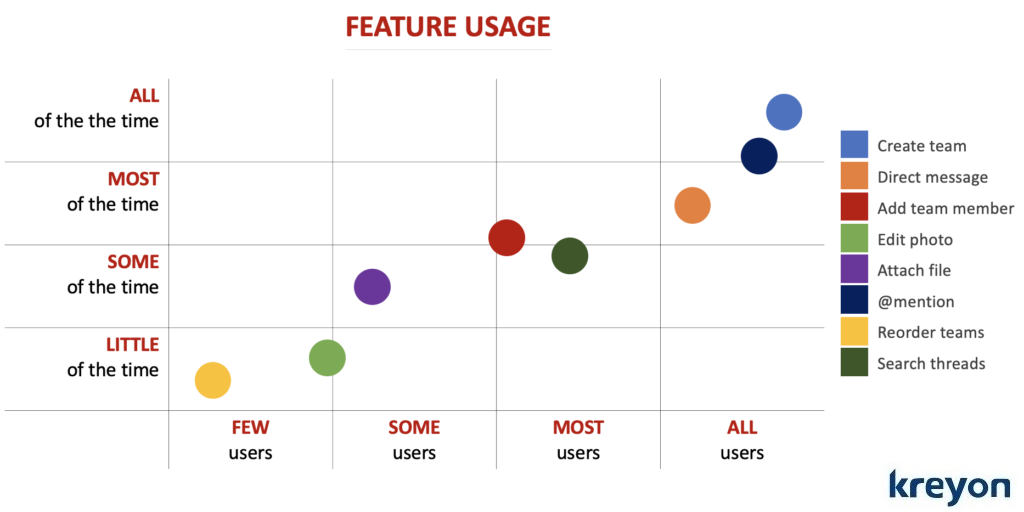Product Management Fundamentals & Lessons from SaaS Unicorns

The product management fundamentals are the foundational blocks for a SaaS product. Companies that develop products with clarity of their customer’s needs, desired outcomes, and right market opportunities, are poised for success.The SaaS unicorns develop their own methodology and approach to understand the underserved outcomes desired by their customers. They target the right market opportunities and drive product execution in line with business growth.
Companies that scale and grow their SaaS products never work hard on things their customers don’t want. This distinction is critical in shaping the products that succeed versus others that don’t. Here’s a look at the product management fundamentals and lessons from SaaS unicorns:
1. Underserved Outcomes
Have you established the outcomes your customers are looking for? Are these outcomes served by other products? SaaS companies zone into the right opportunities by uncovering the underserved needs of their customers. They evaluate their development roadmap by aligning it with the priorities of the underserved outcomes that their customers are looking for.
The underserved outcomes solve customer problems that are not addressed by others. They simplify things for their customers. For e.g. Canva designed and built a simple SaaS product that helped their customers create stunning designs without learning Photoshop or other complicated tools. It is a stripped down version of Adobe Photoshop that anyone can use with ease.
SaaS unicorns focus their efforts on building features that customers use. They eliminate wastage of development time, efforts and resources. The product is built to accomplish its desired outcomes for the customers.
2. AARRR Metrics

Product management fundamentals require a deep understanding of the metrics that need to be measured. For SaaS products, companies need in-depth understanding of AARRR metrics and its underlying drivers:
Acquisition: How does the user come to your product?
Activation: The user’s first interaction with your product and his first experience.
Retention: The user onboarding experience that brings him back to the product to use it again & again (over a period of time).
Referral: Does the user like it enough to tell someone about it?
Revenue: The user finds your product valuable enough to pay for using it.
The AARRR metrics drive the SaaS product adoption and growth. Companies that measure these metrics leverage insights from customer behaviours to fine tune their products to meet their needs. Unicorns adapt their products for specific groups of customers and iterate their products to meet their needs.
3. Risk Analysis
Studies have shown that the majority of SaaS products fail to impress their customers. The successful products are built by understanding and eliminating the risks involved in the process. Technology products have a shorter life cycle compared to products in the other industries like manufacturing, energy, automobiles etc.
The risk analysis helps companies do their due diligence to mitigate unwanted outcomes. Some of the involved risks include:
Right Product: SaaS companies should guard against building products without validating them with their potential customers. The right product is the one for which the customer is willing to pay or the users spend enough time on the product for it to be monetised.
Technology: Technology changes quickly. You need to constantly look at the industry trends and other technologies which can be used to solve the problems you’re looking to solve. Are you working with the right technologies?
Team: Is your team competent enough to build the right product? Do you have a good mix of talent needed to scale and meet the demands of the future? The right team is important for building the right product.
Competition: How is your product placed with respect to the competition? Is your product serving features and outcomes that are not covered by competitors? How is your product priced? Even with established competitors, you can still grab the market with a superior product. Slack is an e.g. of a product that made its mark despite incumbents.
Growth: Many products are not architected to be scalable. SaaS unicorns typically charge little from their customers, so they rely on large no. of users for achieving sustainability. So, a product has to ensure good architecture and best practices for it to grow.
Legal & Compliance: Product management fundamentals require understanding of the legal ramifications of the product. It needs handling users data with care as per the applicable laws and adopting the technologies to safeguard privacy. The legal and compliance aspects are crucial for scale of a company.
4. Feature Adoption

The complexity of a product can cause its downfall. When products are stacked with too many features, it runs the risk of chasing users away. The users today want products that serve their needs end to end with a simplistic workflow. A lot of SaaS companies make the mistake of adding features that no one uses.
Companies need to build in analytics tools for understanding the user interactions and behaviours. Features that are rarely used by customers should be removed from the products. It makes developers and teams focus their efforts on things that really matter.
The SaaS unicorns build checkpoints into the product development process to meet the initial criteria and not add features for the sake of it. The product concept is strictly adopted after vetting the outcomes it intends to serve.
5. Technology Strategy
SaaS unicorns are built on products architected to scale, securely and functionally to address customer problems. These products are developed to address customer pain points and issues with technology enabled solutions at scale. However, technology evolves fast and needs constant realignment.
Product management fundamentals deal with the changing technology trends and plan development in advance. When new technologies are adopted, it can lead to better solutions for the customers. It is the prerogative of the SaaS companies to keep experimenting with new technologies to serve their customer needs.
A technology strategy provides direction and roadmap for a company to innovate. It helps product managers to try new things and keep looking out for ways to improve the product.
An innovative mindset requires experimentation and working on new ideas to improve their product.
6. Qualitative Data & Feedback

Successful products employ deep and methodical analysis to solve problems for their customers. They use the customer data to understand how they judge a product’s value, what tasks they are trying to do, their desired outcomes, constraints and new opportunities.
The customer data provides the best way for companies to uncover new opportunities. They use this data for qualitative analysis, which leads to growth and innovation opportunities. Companies can focus on their priorities and understand what customers really want.
This data helps companies analyse the usage patterns, churn and adoption curve of their products. The usage data helps product teams to find the gaps in existing solutions and provide better solutions to wow the users by testing it continually and improving it.
The customer data is used as a feedback loop for engineering better product design. The product could also enrich the user experience with explicit feedback and surveys. The inputs received from customers could be used for prioritising product developments. Feedback surveys could be built into the product for higher response rates and interactivity.
Kreyon Systems is a SaaS development company. If you have any queries for us or need help in building software products, please reach out to us.
